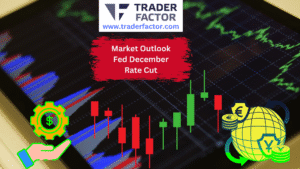According to the US Census Bureau, Retail Sales in the US increase by 0.2% in June, reaching $689.5 billion. This is a revision from the originally reported 0.3% increase in May, which has now been revised higher to 0.5%. Retail Sales Ex-Autos also see a 0.2% increase in the same period, slightly below market expectations of 0.3%.
The most recent data uncovers a rather modest increase of 0.2% in retail sales for the United States during June. This reveals a few vulnerable spots within the economy.
Economists anticipated a 0.5% surge in sales, but the figures fell short due to decreased spending at gas stations.
While retail sales have traditionally served as a reliable measure of economic strength, they have become somewhat less dependable as of late, largely because Americans are now prioritizing spending on services rather than goods. That being said, overall consumer spending remains notably robust.
Key findings highlight a noteworthy upswing in sales at furniture and electronics stores, as well as online retailers. In contrast, sales at home centers, department stores, and gas stations experienced a decline, which actually works in favor of consumers.
Sales of new vehicles and auto parts, a category prone to fluctuations, showed a slight increase of 0.3% last month, contributing to an overall 5.3% surge over the past year.
When excluding car dealers and gas stations, retail sales only ticked up by 0.3%, which provides a better insight into consumer demand. Additionally, the sales figures for May were adjusted to reflect a stronger gain of 0.5%.
Economists pay close attention to the performance of bars and restaurants, as they represent the sole service sector included in the retail report.
While restaurant receipts experienced a marginal increase in June, they have seen an impressive 8.4% growth over the past year.
Retail sales exhibited rapid growth between 2021 and 2022, driven by consumers purchasing substantial quantities of goods like computers and cell phones. However, spending has now shifted towards services such as travel, dining out, and recreational activities.
Despite the deceleration in retail sales, total consumer spending continues to outpace inflation, preventing an immediate recession from occurring.
Experts are confident that as long as the labor market remains stable, consumers will remain the driving force behind the economy.
The market responded to this news with a minor downturn in both the Dow Jones Industrial Average and the S&P 500.
Table of Contents
ToggleEUR/USD drops towards 1.1200 as US Dollar makes a comeback
In the American session on Tuesday, EUR/USD experiences a slight decline and falls towards the 1.1200 mark. Despite mixed economic data from the US, the US Dollar remains strong, presenting a challenge for the pair to recover.
On the other hand, GBP/USD faces difficulties at 1.3100 and falls back as the US economy displays signs of weakness, as indicated by unfavorable economic data released on Tuesday.
Furthermore, the upcoming UK inflation report is expected to keep the GBP/USD pair within a range of familiar levels. Currently, the GBP/USD is trading at 1.3055, reflecting a decrease of 0.13%.
Why Traders Should Be Concerned About Retail Sales Report
Retail sales refer to the total amount of merchandise sold by retailers to final consumers over a period of time. Retail sales are an essential economic indicator that plays a crucial role in shaping the trading landscape.
Traders use retail sales as a tool to analyze economic strength and make informed investment decisions.
One of the primary reasons why retail sales are important for traders is that they serve as a barometer for consumer confidence and spending habits.
When retail sales figures are strong, it indicates that consumers are willing and able to spend money. This translates to a healthy economy, which is good news for traders. When the economy is doing well, companies are profitable, and stock prices tend to rise.
Traders can make informed decisions regarding their investments based on retail sales trends.
In addition, retail sales data provides valuable insights into consumer behavior. Retailers collect data on everything from what products are selling the most to how consumers are paying for their purchases.
This data can be used by traders to make informed decisions about which sectors to invest in. For example, if retail sales data shows that consumers are buying more tech gadgets, traders may choose to invest in tech stocks.
Similarly, if retail sales indicate a shift towards online shopping, traders may consider investing in e-commerce companies.
Furthermore, retail sales are often used as a leading indicator of economic growth. Retail sales data can help traders predict economic trends, such as recessions or expansions.
For instance, if retail sales figures decline over a prolonged period, it may be a sign that the economy is headed towards a recession. On the other hand, if retail sales figures continue to rise, it may signal that the economy is expanding.
Finally, retail sales reports can be used to gauge the performance of individual companies. Traders can analyze retail sales data to see how well specific companies are doing in the market.
If a company’s retail sales figures are strong, it may indicate that the company is growing and could be a good investment opportunity. Conversely, if retail sales figures for a company are weak, it may indicate that the company is struggling, and traders may want to avoid investing in that company.
Retail sales are a critical economic indicator that traders use to make informed investment decisions. Retail sales data provides insights into consumer behavior, predicts economic trends, and can be used to gauge the performance of individual companies.
Traders must closely monitor retail sales reports to stay ahead of the market.
How Does The Retail Sales Report Affect The Currency
The retail sales report can have a significant impact on currencies in the foreign exchange market. When retail sales figures are higher than expected, it is generally seen as a positive sign for the economy, which can lead to an increase in demand for the currency of that country.
For example, let’s say that the United States releases its monthly retail sales report, and the figures show that retail sales have increased by more than expected. This news could cause traders to become more optimistic about the US economy, which may lead to an increase in demand for the US dollar. As a result, the value of the US dollar may rise against other currencies in the forex market.
On the other hand, if retail sales figures are lower than expected, it can be seen as a negative sign for the economy, which may lead to a decrease in demand for the currency of that country. In this scenario, traders may sell their holdings of that currency, causing its value to decline against other currencies.
It is important to note that retail sales figures are just one of many economic indicators that can affect currency values. Other economic indicators such as inflation, GDP, and employment data can also have a significant impact on currencies.
The retail sales report can affect currencies in the forex market by impacting trader sentiment about the strength of an economy. Higher-than-expected retail sales figures can lead to an increase in demand for a currency, while lower-than-expected retail sales figures can lead to a decrease in demand.
It is essential for traders to keep track of multiple economic indicators to make informed decisions about their investments in the forex market.
Disclaimer:
All information has been prepared by TraderFactor or partners. The information does not contain a record of TraderFactor or partner’s prices or an offer of or solicitation for a transaction in any financial instrument. No representation or warranty is given as to the accuracy or completeness of this information. Any material provided does not have regard to the specific investment objective and financial situation of any person who may read it. Past performance is not a reliable indicator of future performance.

















